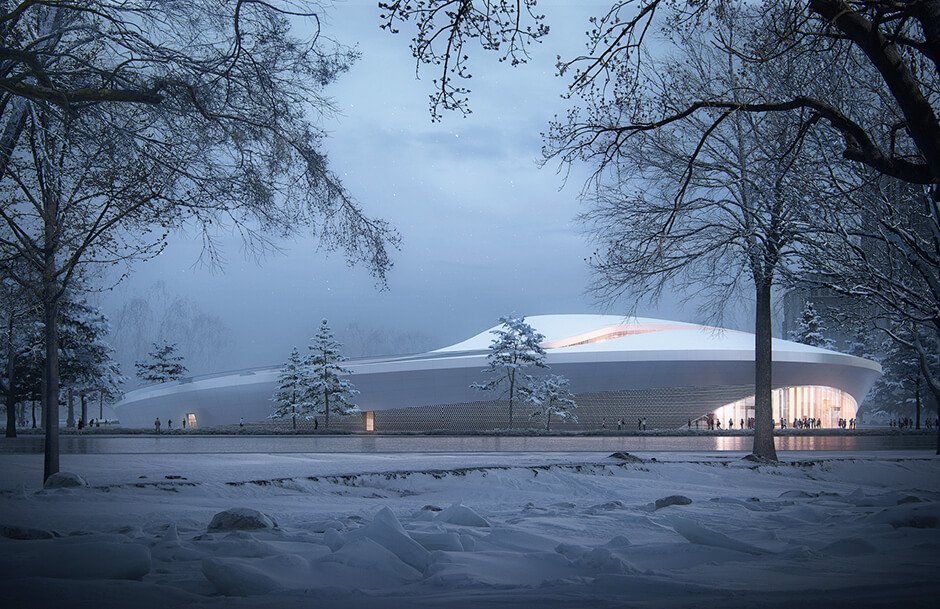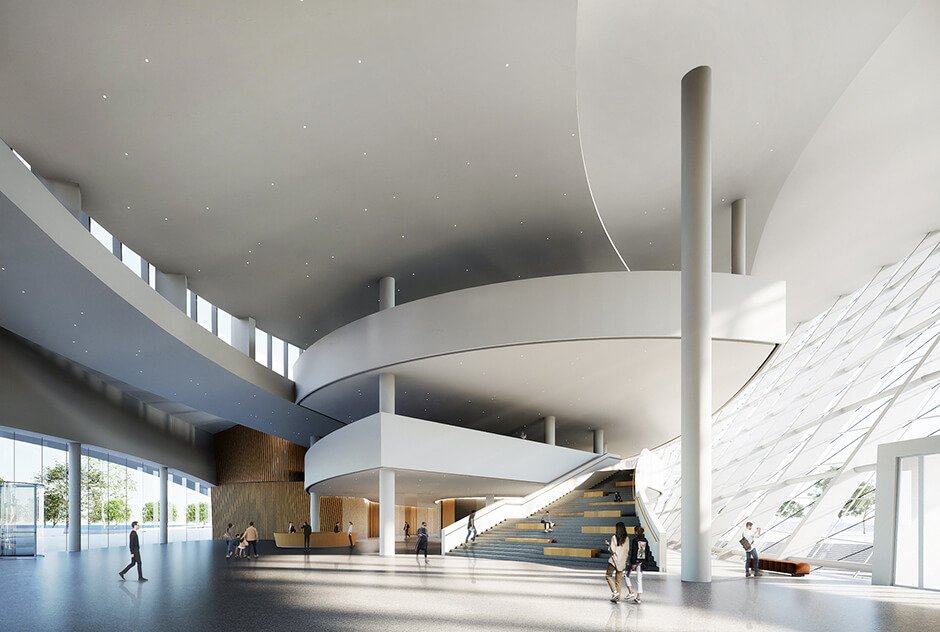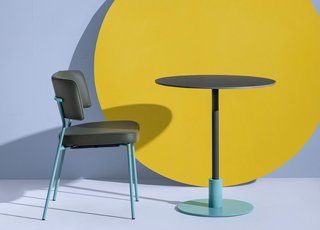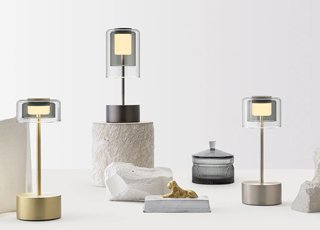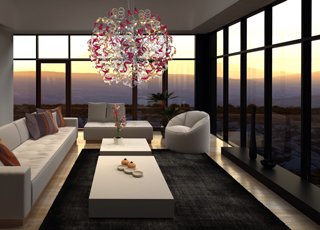Muda Architects models Tianfu Museum of Chinese Medicine on yin-yang symbol
A museum in Chengdu that will be devoted to the history of Chinese medicine and be organized in the shape of the yin-yang symbol has been disclosed by the Chinese architectural company Muda Architects. The 13,000 square meter structure will be known as the Tianfu Museum of Chinese Medicine and lie next to Huitong Lake in Pengzhou. The concept, created by local firm Muda Architects, will merge water with a ring-shaped land feature to create a massive Taiji diagram, or yin-yang symbol, which symbolizes the tenets of holistic traditional Chinese medicine (TCM).
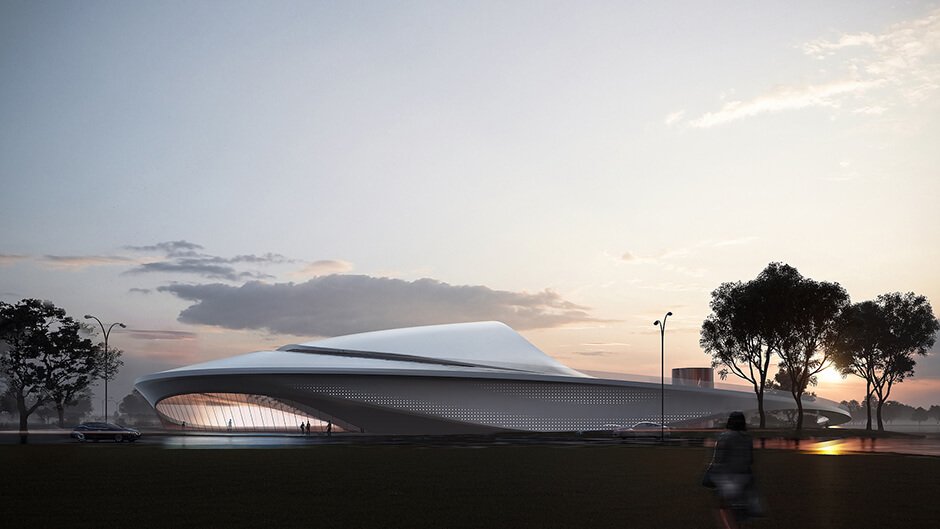
The main entrance of the Tianfu Museum of Chinese Medicine will be situated on its west side after it is finished. Here, the facade's perforated aluminum panels will block the sun to keep the building cool. A double-curved glass curtain wall will let in more natural light on the building's lake-facing east facade. On the ground floor, there will be primary public areas, such as the entrance hall, an auditorium, an interactive exhibition space, and the dining area. On the first and second floors, there will be an exhibition and workshop room set up.
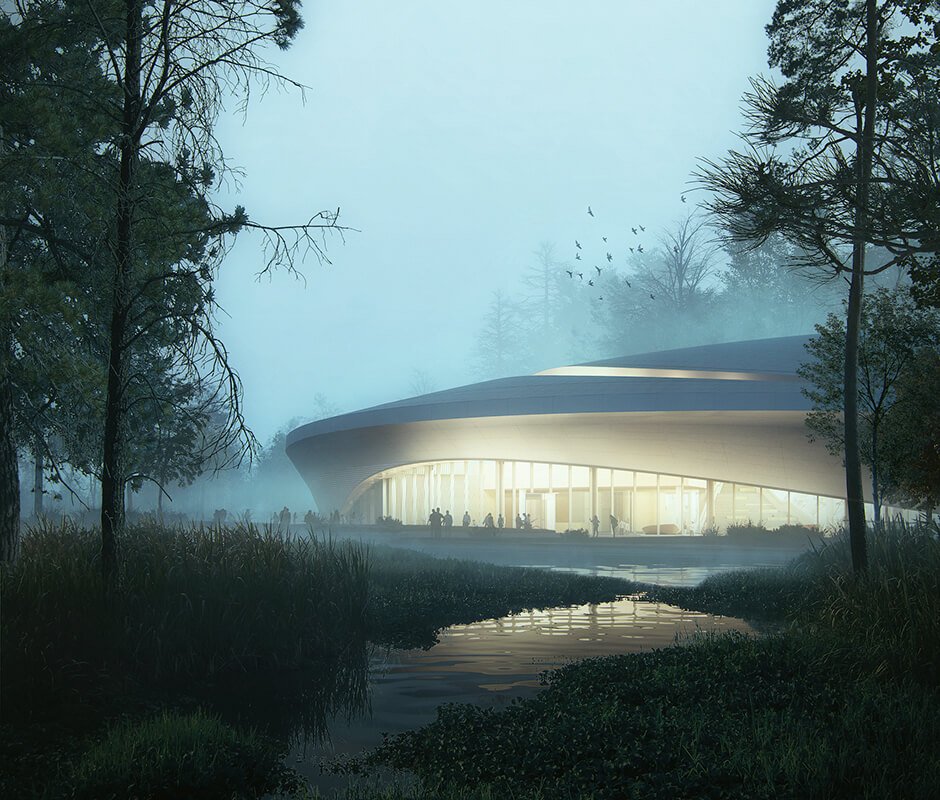
The basement level of the Tianfu Museum of Chinese Medicine is planned to have utilities and parking, and it will link to a sunken outdoor plaza where a variety of public events will be held. The museum's exterior was also created by Muda Architects, and it has seasonal TCM herb plantings to help visitors learn. The museum will be open to the public around-the-clock. The main building for the Tianfu Museum of Chinese Medicine has been built, and it is scheduled to open in 2023.
In other parts of Chengdu, Zaha Hadid Architects is designing a sinuous white exposition center for the Unicorn Island development, while architecture firm OMA is working on a car-free masterplan that emphasizes the city's existing geology and terrain.
